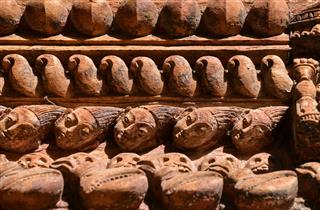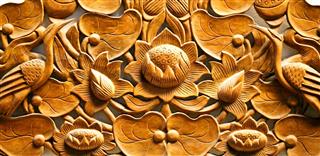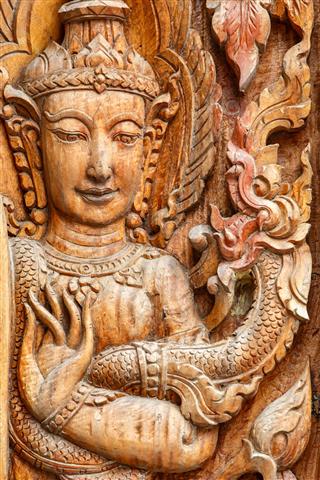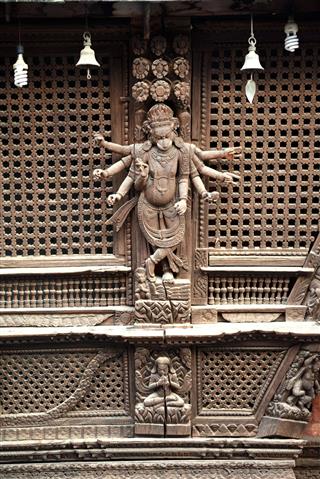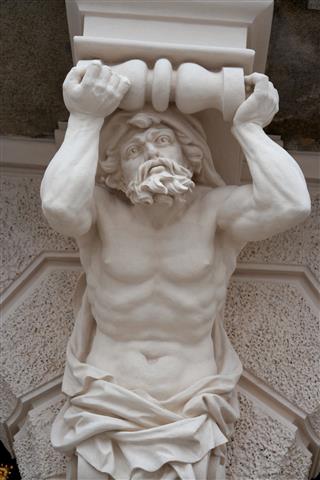
Bas-relief and high relief are two sculpting techniques, which have continued to remain popular the world over since ancient history. ArtHearty will compare and contrast the two techniques.
In a relief, figures or images project to varying degrees from a two-dimensional plane (a plank of wood or a slab of marble, for example). … As with two-dimensional works of art, though, reliefs are intended to be viewed primarily from one perspective.
― Lois Fichner-Rathus in Understanding Art (10th Edition)
Sculpture is, by far, the most expressive form of plastic arts. Much like its elder cousin, architecture, it represents the physical manifestation of the human creative potential, which is why, sculpting has succeeded in maintaining its position as a stand-alone and dignified art form throughout the ages. The art of sculpting was invented to complement and accessorize architecture, in order to add an aesthetic touch to the latter. So, most of the very early examples of sculptures can be found adorning the friezes, niches, walls, columns, etc., of grand architectural edifices. Essentially three-dimensional in form―bearing the dimensions of height, width, and depth―sculptures can be executed in a wide array of materials such as wood, stone, clay, ceramic, metals (brass, bronze, iron, gold, silver, lead, aluminum, etc.), ivory, fiberglass, resin, and even sand. Their longevity depends on the type of material used to make them.
There are different techniques used to make these sculptures. The most famous amongst these include free-standing sculptures and carving them in reliefs―high, low, sunk, counter, etc. In this ArtHearty write-up, we will compare and contrast the bas (low)-relief sculptures, and those made in high relief.
Bas-relief vis-à-vis High Relief Sculptures
Before we go on to learn about the difference between the two sculpture techniques, it should be noted that, more often than not, the distinction between the two is subjective in nature, especially in cases where the two techniques are combined in a single piece of work. Nevertheless, here are some points worth comparing between the two sculpture techniques.
| Bas-relief Sculptures | High Relief Sculptures |
| Derived from | |
| Italian basso rilievo, a.k.a. low-relief | Italian alto relievo |
| Meaning | |
| A sculptural relief in which the figural projection from the given plane or surface or background is slight and very delicate | A sculptural relief in which the figural projection from the background surface is significant and notable |
| Relative Depth | |
| In the lowest reliefs, like the figures carved on coins, the dimension of depth may make no sense if observed from one side. However, when observed from the front, the relative depth of the sculpted elements may be visible. | Here, the depth of the sculpture is clearly visible, irrespective of whether one looks from the sides or front. In fact, if it is a very high relief sculpture, many elements may even be completely detached from the background. |
| Perspective | |
| Low-relief sculptures look like mere outlines of elements, sometimes with minute details. |
Looking at very high relief sculptures is, more often than not, like looking at free-standing statues, standing on their own without any attached plane. |
| Technique | |
| The plane is moderately scratched out with a chisel to remove the “extra” part of the background, in order to leave out the raised, unsculpted portions that form the sculpture. Detailing, if any, is done at the end. | In a full range high relief sculpture, over 50% of the depth of the figure has to be portrayed. So, more of the background has to be chiseled out, and because the figure is larger and clearer, more detailing has to be done. |
| Time and Cost | |
| Carving in low-relief is less labor-intensive, and so, lesser time is taken to complete these sculptures. This, in turn, means lower costs. | This is a more laborious task as more background surface needs to be chiseled out, thus, requiring more time and money. |
| Light and Shadow Effect | |
| Limited due to less prominent depth | A salient feature of high relief sculpture, owing to its prominent depth |
| Commonly Used Materials | |
| Stone, brick, terracotta, and metals (gold, silver, copper, bronze) in case of coins | Mostly stone; also stucco and terracotta in many cases |
| Common Technique In | |
| Ancient Egyptian art; ancient Near Eastern and Asian cultures; Mesoamerican art; ancient Hindu and Buddhist sites in India, Java, Cambodia, and Sri Lanka; ancient European art; Babylon; and Pompeii; very rare instances from the Middle Ages | Ancient Greek and Roman art; medieval Hindu and Buddhist art of India and Java; medieval Europe, both as a funerary art as well as on the exquisitely sculpted neoclassical pediments |
Relief sculptures are common all across the world, and can be generally found adorning the walls of architectural edifices. However, in certain instances, these sculptures have also been discovered in smaller settings, such as sarcophagi and so on. It is also worth noting that in the early phases, most low-reliefs were painted, so as to make the forms sharper and more prominent.
Gallery
No write-up about sculptures can be complete without pictures. Here are some good examples of bas-relief and high relief sculptures for you to look at.
An Egyptian hieroglyph in bas-relief
Bas-relief of Apsaras at Angkor Wat, Cambodia
Bodhisattva bas-relief at Candi Sewu, Central Java, Indonesia
Bas-relief on the frieze at Mahabalipuram, Tamil Nadu, India
Bas-relief of the Buddha at Ajanta, Maharashtra, India
Bas-relief on Trajan’s Column, Rome, Italy
High relief at Certosa di Pavia monastery, Lombardy, Italy
High relief at Donskoy monastery, Moscow, Russia

High relief sculpture of the Greek Goddess Artemis
High relief at the Ranakpur Sun temple, Rajasthan, India
High relief at St. Isaac’s Cathedral, St. Petersburg, Russia
High relief at Pisa Cathedral, Pisa, Italy
Reliefs are generally used to depict complex subjects, having several figures with animated poses so that an extended narrative of a particular event/myth may be represented. Owing to this, most of the relief sculptures that have been discovered till today, are in the form of huge horizontal and/or vertical panels, and bear all sorts of figures and motifs. Even today, high and low relief sculptures occupy a prominent place in the art of sculpting, and continue to remain popular the world over.








































